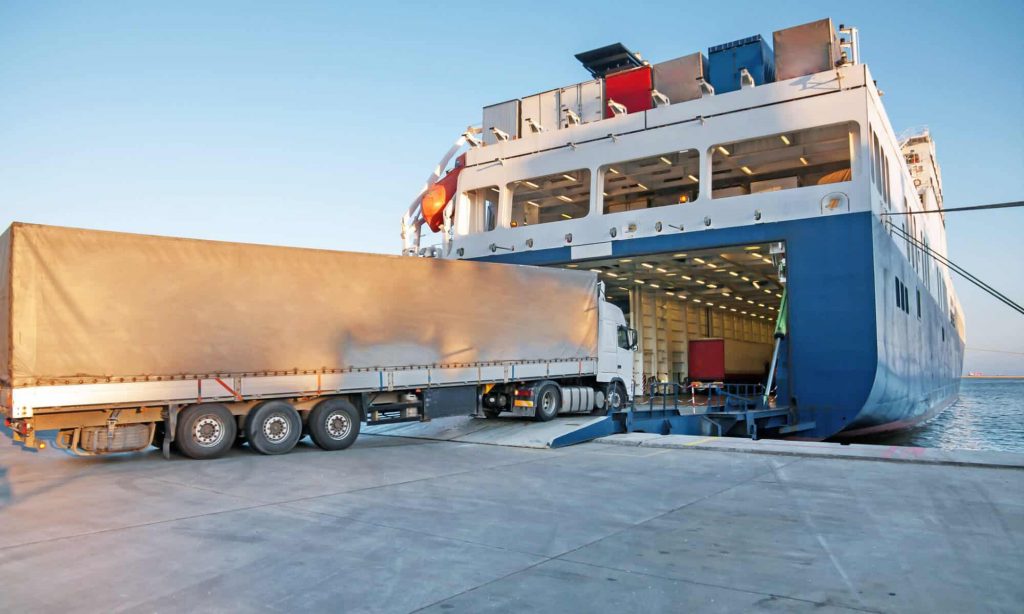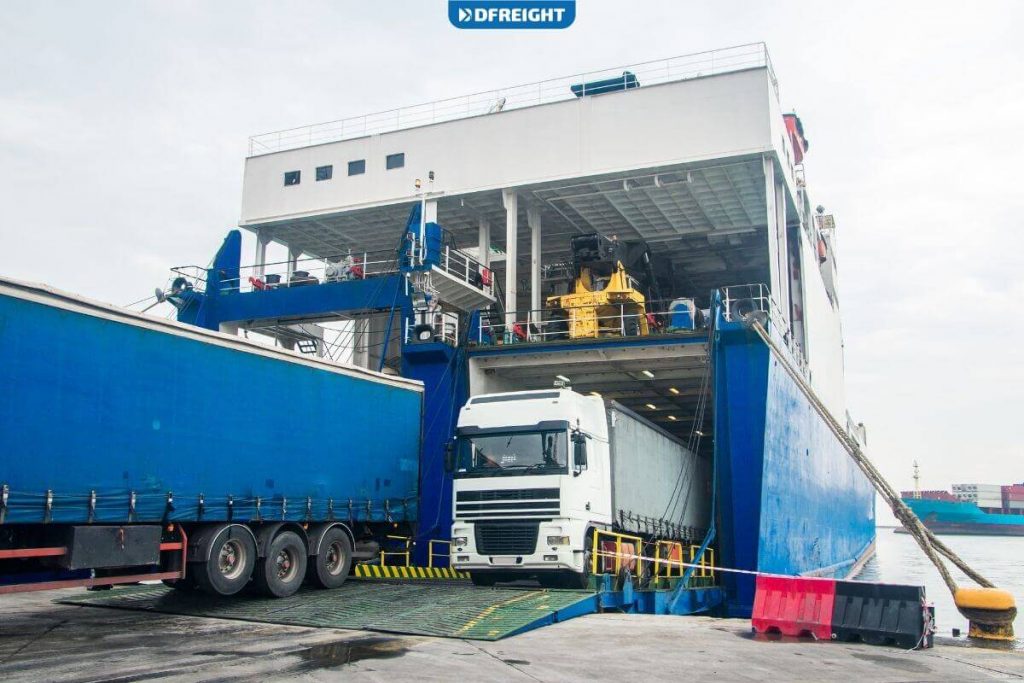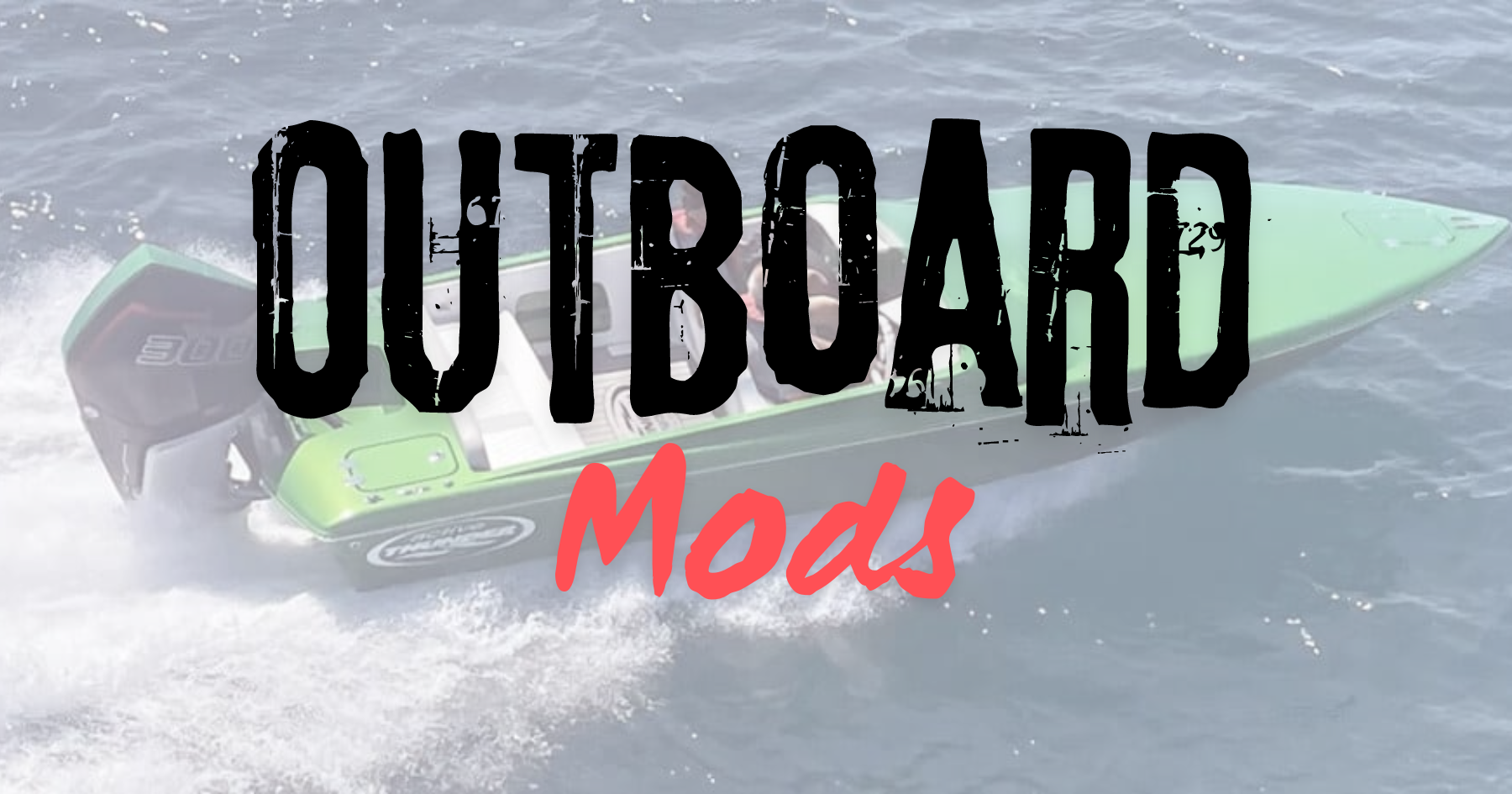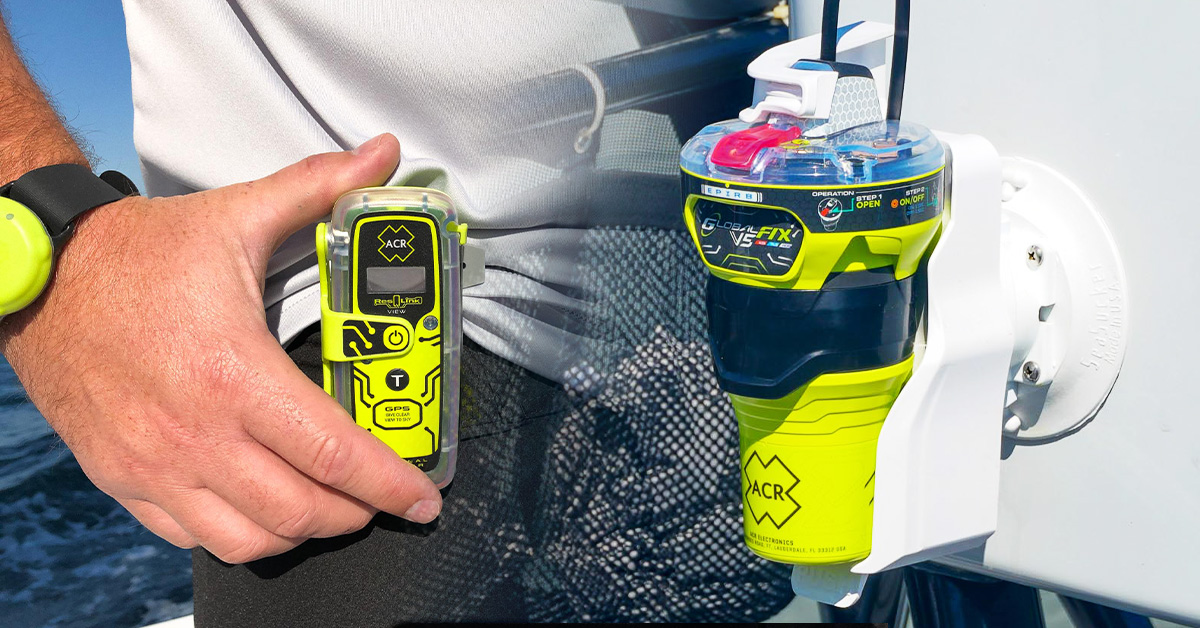Roro Ship: Essential Features and Modern Development Trends
Roll-on/roll-off (RoRo) ships have revolutionized the maritime industry by offering a more efficient and versatile method of cargo transportation. These specialized vessels are designed to facilitate the loading and unloading of wheeled cargo, such as automobiles, trucks, and heavy machinery, making them a popular choice for various industries. The unique design aspects and operational capabilities of RoRo ships have led to their widespread adoption in global trade and numerous advancements in shipping technology.

In addition to the numerous advantages RoRo ships offer, such as faster loading and unloading times, they have also become crucial components in the growth of global trade. As the demand for efficient cargo transportation continues to rise, RoRo ships have maintained their position as a go-to solution for many shipping companies and industries. Despite the challenges that the RoRo industry faces, innovations in ship design and construction, as well as regulatory measures, help mitigate risks and ensure a sustainable future for this mode of transport.
Key Takeaways
- RoRo ships provide efficient loading and unloading of wheeled cargo, enhancing global trade operations.
- Innovations in design and strict regulations contribute to the RoRo ships' continued success and sustainability.
- Challenges like environmental concerns and industry competition drive on-going advancements within the RoRo shipping sector.
Types of RoRo Ships
RoRo (Roll-on/Roll-off) ships are specially designed vessels for transporting vehicles and cargo on wheels. They have built-in ramps that facilitate the efficient loading and unloading of various types of vehicles. There are several types of RoRo ships, each serving a specific purpose in the maritime industry.
Pure Car Carriers (PCC) and Pure Car and Truck Carriers (PCTC)
PCCs and PCTCs are RoRo ships specifically designed to transport vehicles like cars and trucks. They usually have multiple decks, allowing them to accommodate thousands of vehicles at once. PCCs are designated for carrying only cars, while PCTCs can transport both cars and trucks, providing more versatility in cargo transportation. You can find an example of such a ship in this book.
RoRo Ferries
RoRo Ferries are designed for short-sea or domestic routes and can carry passengers, vehicles, and cargo simultaneously. They have different deck configurations to accommodate a wide range of vehicle types, such as cars, buses, and trucks. Some RoRo ferries even have accommodations and amenities for passengers, making them a popular choice for short-sea transportation services. An example of standardized RoRo ferries can be found here.
ConRo Ships
ConRo Ships are a hybrid vessel type that combines the features of RoRo and container ships. They can carry both roll-on/roll-off cargo, such as vehicles and heavy equipment, and containerized cargo. This versatility makes them ideal for transporting a variety of goods, as they can accommodate different types of cargo in one shipment. These ships provide a flexible option for cargo transportation, as illustrated in this study.
Specialized Heavy Equipment Carriers
Specialized Heavy Equipment Carriers are RoRo ships designed to transport oversized cargo, such as heavy machinery, trailers, and construction equipment. These vessels have adjustable decks and reinforced structures to support the heavy weight of their cargo. They are used primarily in the transport of large-scale construction or industrial equipment, providing a safe and efficient means of moving valuable assets.
Overall, the various types of RoRo ships cater to diverse cargo transportation needs, offering efficient and reliable services in the maritime industry.
Design and Construction
Hull Design
The hull design of a roll-on/roll-off (RORO) ship is crucial for optimal cargo loading and unloading. Due to their unique design, RORO ships need to have a strong and stable structure. These vessels have a large open area for cargo called a "deck" and are specifically designed to carry wheeled cargo such as cars, trucks, and trailers. The hull is responsible for providing the strength and stability needed in these types of ships, as well as maintaining the overall integrity of the vessel during operation. The standardization of ship hull construction components for RORO vessels is essential for achieving efficiency in their construction.
Built-In Ramps
RORO ships are equipped with built-in ramps that allow vehicles to roll on and off the vessel directly. These ramps are typically located at the stern and bow of the ship, allowing cargo to be loaded and unloaded in a smooth and efficient manner. The design of the ramps is critical for the safe and efficient loading of cargo, as they must accommodate a wide range of vehicle sizes and weights. Additionally, the ramps need to be strong and durable, capable of withstanding constant usage and harsh maritime conditions.
Cargo Decks and Capacity
A significant aspect of RORO ship design is the layout and capacity of the cargo decks. These decks are where the wheeled cargo is stored during transportation. The cargo decks in RORO ships are designed to maximize efficiency by enabling high cargo capacity. This capacity is typically measured in terms of gross tonnage or the total space available for cargo on the vessel.
The design of the cargo decks may vary based on the specific type of cargo to be carried, as well as the intended routes and operating conditions of the ship. For instance, some RORO ships may feature adjustable decks that can be reconfigured to accommodate different types of cargo, or multiple levels of storage. Furthermore, certain RORO vessels may also be equipped with cranes for loading and unloading containers in addition to wheeled cargo.

Stability and Safety Features
RORO ships are subject to strict safety regulations under the International Convention for the Safety of Life at Sea (SOLAS) to ensure their stability and minimize the risk of accidents. These safety features focus on maintaining the ship's stability during the loading, unloading, and sailing processes.
One of the main stability concerns in RORO ships is the free surface effect, which occurs when water or other liquid cargoes shift within their tanks, causing the ship's center of gravity to shift and potentially affecting the ship's stability. To mitigate this issue, RORO ships incorporate advanced systems and designs that minimize the impact of the free surface effect.
In recent years, there has been increased focus on addressing safety aspects in the design and construction process of RORO ships. For example, concurrent treatment of safety aspects takes the safety requirements into account from the earliest stages of ship design to ensure a reliable and secure finished vessel.
In conclusion, the design and construction of RORO ships involve various factors, including hull design, built-in ramps, cargo decks, capacity, and stability and safety features. These elements all contribute to the overall efficiency and effectiveness of RORO ships in transporting wheeled cargo and containers across the world's oceans.
Operations and Handling
Loading and Unloading Mechanics
Roll-on/roll-off (RoRo) ships are designed for efficient transportation of wheeled cargo such as vehicles, trailers, and barges. Loading and unloading of these ships are facilitated by built-in ramps, allowing for fast and easy movement of cargo on and off the ship. On some RoRo vessels, cargo may be moved vertically through the use of internal ramps or lifts. For larger, non-wheeled cargo, a combination of RoRo ships with lift-on/lift-off (LoLo) capabilities may be employed, utilizing cranes to load and unload cargo.
In general, the loading process for RoRo ships begins with the cargo being driven or towed onto the ship's deck, commonly referred to as roll-on. Once onboard, the cargo is strategically positioned according to a stowage plan to optimize the ship's stability and safety during transit. Unloading, or roll-off, follows a similar procedure in reverse. For precise and accurate cargo handling, detailed documentation of cargo weights and dimensions is crucial in handling operations for RoRo ships.
Cargo Securing and Management
Safety is a top priority when managing cargo on RoRo ships. Cargo is secured using various lashing and securing techniques, depending on the type of cargo and the specific ship's design. For example, vehicles may be fastened using wheel chocks, chains, and tensioners, while containers and trailers may require twist locks or other specialized securing devices.
Proper cargo management also involves creating an optimal stowage plan to ensure the best use of available space, weight distribution, and overall stability of the vessel. This is accomplished by considering factors such as cargo dimensions, weight, and potential hazards. Accurate stowage planning is essential to minimize the risk of damage to cargo, vessel, and personnel.
Roll-On/Roll-Off Procedures
The roll-on/roll-off process requires careful coordination between ship's crew, port personnel, and cargo handlers to ensure a smooth and efficient workflow. Typically, a RoRo vessel will first moor at a specially designed terminal with adequate infrastructure to support the ship's ramps and cargo. The ship will then align its ramps with the port's shore infrastructure, making it possible for vehicles and other wheeled cargo to freely move between the vessel and port.
Before starting the roll-on/roll-off process, it is essential to verify that the vessel's cargo capacity aligns with the weight and dimensions of the planned cargo. It's also crucial to follow any established safety protocols, such as prohibiting personnel from standing near the ramps during movement or ensuring that cargo is adequately secured while onboard. By following these guidelines, RoRo ships can efficiently and safely transport a wide variety of cargo, saving time and resources for both the ship operator and port facilities involved.
Advantages of RoRo Shipping
Speed and Efficiency
One of the main advantages of RoRo shipping is its speed and efficiency when it comes to transporting wheeled cargo, such as automobiles, motorcycles, buses, and trucks. This method utilizes a roll-on roll-off system, which allows for a seamless loading and unloading process. As a result, the time spent in port is significantly reduced compared to traditional containerized shipping methods. For instance, RoRo shipping offers a competitive advantage in terms of frequency of departures, ultimately enhancing the overall efficiency of intermodal transport chains.
Flexibility and Versatility
RoRo shipping is highly flexible and versatile, as it can accommodate a wide range of cargo types. In addition to wheeled cargo, RoRo ships can also handle self-propelled, oversized, and project cargo, making them a suitable choice for various industries. The design of RoRo ships allows for the efficient utilization of space, as they can be easily reconfigured and adapted to meet specific cargo requirements. Furthermore, short-sea RoRo operators can increase their visibility in the market by showcasing the benefits of RoRo shipping to cargo owners and logistics service providers.
Safety and Reduced Handling
Another advantage of RoRo shipping is the increased safety and reduced handling of cargo during the loading and unloading process. The roll-on roll-off system minimizes the need for forklifts, cranes, and other heavy machinery, ultimately reducing the risk of cargo damage. RoRo ships are also designed with features like sturdy lashing points and specialized cargo areas, ensuring that vehicles and other cargo remain secure throughout the journey. This reduced handling leads to a decrease in overall operational costs, as well as a lower likelihood of cargo damage or loss.
In summary, RoRo shipping offers numerous benefits for transporting various types of cargo, particularly wheeled and self-propelled cargo. Its speed, efficiency, flexibility, and safety aspects make it an advantageous choice for both logistics providers and cargo owners.
Industry Applications
Automobile Transportation
RoRo ships are widely used in the transportation of vehicles in the automobile industry. These ships are designed to carry wheeled cargo like cars, trucks, semi-trailer trucks, trailers, and even trains. Unlike other cargo ships, RoRo vessels efficiently load and unload their cargo with the help of internal ramps, which significantly reduce the handling time and cost for automobile manufacturers. The shipping industry must adhere to strict industry standards to safely transport the cargo and avoid damage or contamination to the products.
Some examples of vehicles commonly transported are passenger cars, trucks, and buses. Strict regulations and safety measures are required to ensure the safe transportation of these high-value items.
Military Logistics
RoRo ships are also crucial in providing logistical support for the military. The Military Sealift Command (MSC) makes use of these ships to import and export military vehicles, equipment, and supplies. Large, Medium-Speed, Roll-on/Roll-off (LMSR) ships have become a vital part of the Military Sealift Command (MSC) as they enable quick and efficient loading and offloading of military cargo to support military operations around the world.
LMSR vessels transport various types of military equipment like tanks, trucks, and utility vehicles. They can also be used for humanitarian missions and disaster-relief operations, where the fast deployment of personnel and resources can save lives and mitigate damage.
Passenger and Civilian Transport
RoRo ships have found their place in passenger and civilian transports as well. Two popular forms of passenger transportation are cruise ferries and high-speed ferries. Cruise ferries are large, luxurious ships that provide a blend of transportation and vacation amenities. They often operate on longer distances, catering to holidaymakers looking for a comfortable and entertaining journey. High-speed ferries are designed for quick, short-distance transportation of passengers, often used for commuting purposes.
In civilian transportation, RoRo ships can also be used for transporting buses and passenger trains, which contribute to intermodal transport networks aimed at improving connectivity and mobility across regions.
To summarize, RoRo ships play a vital role in automobile, military, and passenger/civilian transportation. They provide efficient and effective solutions for transporting various types of vehicles and cargo, contributing significantly to global trade, military operations, and travel.
Global Trade and RoRo Ships
Roll-on/roll-off (RoRo) ships are specialized vessels designed to transport wheeled cargo such as cars, trucks, and trailers. They play a crucial role in global trade by providing an efficient and cost-effective means of transporting goods, so the integration of RoRo shipping in sustainable intermodal transport chains is vital.
Major Trade Routes
RoRo ships can be found on several major trade routes worldwide. Some key routes involve transporting vehicles and other goods between North America, Europe, and Asia. These trade routes are essential for facilitating international commerce by connecting manufacturers, suppliers, and customers in different parts of the world.
One notable RoRo shipping route is between Dublin and Holyhead. Irish Ferries operates two vessels on this route: the Ulysses, named after the famous James Joyce novel, and the Dublin Swift. These ships provide a vital link for trade and transport across the Irish Sea, allowing for the efficient movement of goods between Great Britain and Ireland.
RoRo Shipping in Europe
Europe is home to the largest RoRo market worldwide, with numerous ports and trade routes supporting the movement of cargo via these specialized ships. Some key European ports that support RoRo shipping activities include Gothenburg, Sweden, which handles a significant volume of forest industry exports, and Rostock, Germany, which boasts the world's largest multipurpose RoRo/train ferry, connecting with Trelleborg, Sweden (source).
The Firth of Forth in Scotland is another key location for RoRo shipping, serving as a strategic hub for cargo movement between European countries, such as Norway and the Netherlands, and the United Kingdom. Several port facilities in the region cater to RoRo vessels and enable seamless integration with other modes of transport, such as rail and road.
In conclusion, RoRo ships play a significant role in global trade, particularly within Europe, by facilitating the efficient and environmentally sustainable movement of wheeled cargo. Numerous major trade routes and ports rely on these specialized vessels to support the demands of international commerce, making RoRo shipping an indispensable component of the global supply chain.
RoRo Ship Innovations and Future
Environmental Considerations
RoRo ships, being a significant part of the global shipping industry, are also subject to increased demands for sustainability and eco-efficiency within the maritime sector. A recent study highlights the importance of integrating RoRo shipping in sustainable intermodal transport chains, taking into account environmental policies and future regulations. This integration could contribute to reducing the shipping industry's carbon footprint and improving air quality.
As part of this effort, many industry players, such as Wallenius Wilhelmsen Logistics and Nippon Yusen, are actively exploring alternative methods for powering their fleets. These options include wind-assisted propulsion, electric power, and pure wind propulsion, all aiming to achieve zero-emission RoRo ships.
Technological Advancements
RoRo ship operators are also driving innovations in vessel design and capabilities, making use of state-of-the-art technology. Self-propelled modular transport is one such promising innovation, where RoRo vessels employ modular systems to offer flexibility, scalability, and efficiency.
Notable examples include the MS Color Magic, which is not only the largest cruise ferry in the world but also utilizes a hybrid electric system for operations. Similarly, the Japan-based company K-Line is exploring hybrid electric and battery-powered RoRo ships.
In terms of cargo capacity, modern RoRo vessels boast an impressive range, with some reaching up to 6,100 CEU (Car Equivalent Units) or 180,000 metric tonnes of cargo. This enables them to serve a variety of industries, including automotive, construction, and heavy machinery.
To ensure optimal performance and cargo handling, advanced systems such as LIMS (Load Indicator and Monitoring System) are being implemented on RoRo ships. These systems allow for real-time measurements and updates, enabling effective management of the cargo stowage and distribution on board.
In conclusion, the future of RoRo shipping appears to be focused on environmental considerations and technological advancements. With industry leaders striving to enhance fleet efficiency, versatility, and sustainability, these innovations will likely play a crucial role in the continued growth and success of the RoRo ship industry.
RoRo Regulations and Standards
SOLAS and International Safety Standards
The International Convention for the Safety of Life at Sea (SOLAS) plays a critical role in maintaining safety standards for shipping worldwide, including the roll-on/roll-off (RoRo) sector. SOLAS covers a range of issues including the design, construction, and equipment requirements for ships. One of the key aspects addressed by SOLAS is the stability and safety of RoRo ships. The convention establishes requirements for the use of built-in ramps and shore-based ramps to ensure passenger and cargo safety.
RoRo ships are subject to supplementary damage stability regulations. These regulations ensure that, in the event of damage, the vessel can maintain stability and minimize the risk of capsizing. This damage stability standard mandates that a RoRo vessel should be able to sustain a certain level of damage while still maintaining its operational capabilities. Additionally, there are specific rules and guidelines from the International Maritime Organization (IMO) for pre-loading and lashing of cargo on RoRo ships.
Industry Compliance and Best Practices
RoRo ships must comply with a series of safety standards and regulations, such as emission control from low-sulphur fuel requirements and the formation of Emission Control Areas (ECA) in Europe. The implementation of these fuel requirements has a significant impact on the operations and competitiveness of RoRo shipping in Northern Europe.
Slow steaming, a practice of operating ships at lower speeds, is becoming increasingly prevalent in the RoRo and RoPax sectors, as it helps them adhere to the SECA regulations. The adoption of slow steaming results in reduced fuel consumption and greenhouse gas emissions which aligns with the industry's sustainability goals.
To further enhance RoRo shipping safety and efficiency, the industry has begun adopting best practices. These include robust personnel training, regular inspections, and the implementation of safety management systems. One such example is the cargo safety rules and regulations for RoRo vessels, which are aimed at ensuring the secure loading, stowage, and handling of cargo, as discussed in a case study on Höegh Autoliners.
In conclusion, the RoRo shipping industry has made significant strides in improving safety, adhering to international regulations, and implementing best practices. These measures ensure that the sector remains competitive, efficient, and environmentally sustainable while also adhering to the safety requirements to protect life and property at sea.
Challenges Facing the RoRo Industry
Navigational Hazards
The RoRo shipping industry faces many navigational hazards, which can lead to accidents and delays. Some hazards include limited visibility, tight port entryways or channels, unpredictable currents, and uncharted underwater obstacles.
Additionally, RoRo vessels must maintain stability while transporting various types and sizes of breakbulk cargo or vehicles. This requires careful planning, load distribution, and strong organizational skills. Overloading, uneven loading, or improper securing may lead to a loss of stability, causing the vessel to capsize or sustain damage.
Market Fluctuations
Market fluctuations significantly affect the RoRo industry. An increase or decrease in demand for the transportation of cars, containers, and other cargo may impact car-carrying capacity. This, in turn, affects the overall profitability and effectiveness of the industry.
Competition with other shipping sectors, including container and bulk shipping, means that RoRo operators must constantly adapt to stay relevant. The integration of new technologies, expansion of fleet sizes, and strategic planning are all essential to overcome market challenges.
Regulatory Changes
The RoRo industry is subject to various regulatory changes, such as environmental and safety standards set by government entities and international organizations. Compliance with new regulations often requires modifications in vessel design, fuel type, and other operational aspects.
A notable example of recent regulatory change is the implementation of SECA (Sulphur Emission Control Area) compliance strategies. RoRo operators must either switch to more expensive low-sulphur fuels or install emission abatement technology. Meeting these regulations while maintaining operational efficiency and cost-effectiveness is a significant challenge for RoRo shipping companies.
In summary, the RoRo industry faces various challenges, including navigational hazards, market fluctuations, and regulatory changes. Addressing these challenges requires innovation, adaptation, and a strong understanding of industry trends and regulations.
Case Studies and Notable RoRo Ships
MS Color Magic
The MS Color Magic is a notable RoRo ship operating in Northern Europe. As one of the largest and most modern vessels of its kind, it has an impressive carrying capacity and advanced technology to ensure efficient and sustainable operations. The ship, which primarily transports cargo between Norway and Sweden, boasts of environmentally friendly features and corresponds to high safety standards. The MS Color Magic's seamless integration with intermodal transport chains effectively minimizes the carbon footprint of its operations, thus highlighting the potential of RoRo shipping in sustainable logistics.
Ulysses and Irish Ferries
Another example of RoRo shipping success is the Ulysses, a vessel operated by Irish Ferries. Named after the famous novel by James Joyce, the Ulysses is one of the largest and most capable RoRo ships in the world. Offering reliable transportation services between Ireland and the United Kingdom, the Ulysses demonstrates the importance of RoRo shipping in connecting countries and facilitating trade.
With its state-of-the-art capabilities, the Ulysses addresses the challenge of integrating various modes of transport to form seamless transport chains. The ship's PCC (Pure Car and Truck Carrier) design allows it to efficiently accommodate different types and sizes of vehicles, maximizing the utilization of space and ensuring smooth loading and unloading processes.
In conclusion, these case studies of MS Color Magic and Ulysses highlight the essential role that RoRo ships play in today's international trade. As more companies continue to adopt sustainable and efficient logistics practices, RoRo shipping will remain an integral part of the global transport ecosystem.
Frequently Asked Questions
What distinguishes a roll-on/roll-off vessel from a container ship in maritime shipping?
A roll-on/roll-off (ro-ro) vessel specializes in transporting wheeled cargo, such as cars, trucks, and trailers, using built-in ramps that allow vehicles to easily roll onto and off the ship. In contrast, a container ship transports standardized shipping containers that are loaded and unloaded using cranes and other specialized equipment. Ro-ro ships provide greater flexibility and efficiency for transporting vehicles, while container ships are better suited for transporting large volumes of non-vehicular cargo.
How do operations on a ro-ro vessel typically progress from loading to unloading?
Loading and unloading operations on a ro-ro ship are characterized by their simplicity and efficiency. Vehicles are driven directly onto the ship using a built-in ramp and are then securely fastened to the ship's deck. Once the ship reaches its destination, the vehicles can be easily driven off using the same ramp, making the process much quicker and smoother compared to container ships. Proper planning, coordination, and communication among ports, shippers, and operators play a significant role in ensuring smooth operations.
What are the defining specifications of a typical ro-ro ship?
Ro-ro ships are typically equipped with large ramps and multiple decks that can accommodate various types of vehicles and cargo. Other defining features include the ship's dimensions (such as length, width, and height), deadweight tonnage (DWT) capacity, speed capabilities, and the overall design tailored for the smooth and efficient loading and unloading of wheeled cargo.
Can passengers be accommodated on ro-ro ships, and what amenities are provided for them?
Although ro-ro vessels are primarily designed for transporting cargo, some ro-ro ships can accommodate passengers. These passenger-carrying ro-ro ships often offer amenities such as cabins, lounges, dining facilities, and recreational areas. However, the specific amenities provided vary depending on the ship operator and vessel design, designed to cater to the comfort and safety of passengers aboard.
What factors contribute to the cost of shipping goods using ro-ro vessels?
The cost of shipping goods using ro-ro vessels depends on several factors, including the distance and duration of the journey, fuel prices, port charges, the type and volume of cargo being shipped, and any additional services that the shipper may require. The overall efficiency and utilization of the ro-ro ship's capacity can also play a significant role in determining the cost of transport.
How can one access the shipping schedule for ro-ro vessels?
Shipping schedules for ro-ro vessels can typically be found on the websites of individual ship operators, port authorities, or specialized shipping agencies. These schedules provide information on the route, departure and arrival times, and frequency of service, enabling shippers to plan their logistics in a timely and efficient manner.
Charlie is Editor-in-Chief of Sea Magazine







